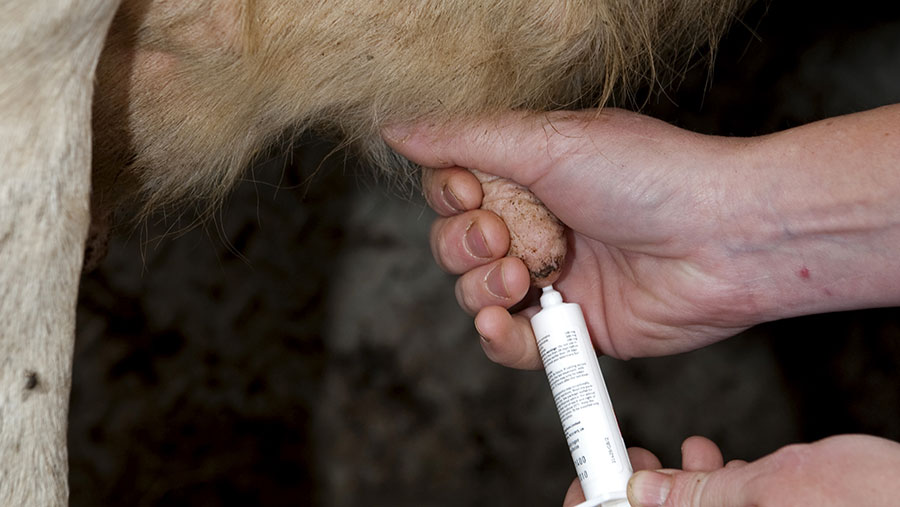Scientists identify way to cut antibiotics to treat mastitis
 © Tim Scrivener
© Tim Scrivener The first UK investigation into reducing antibiotics use by typing mastitis pathogens has found the technique can help dairy farmers slash their use by 24%.
Furthermore, researchers identified some strains of mastitis are cured on their own when left untreated.
It is believed the technique – pioneered in the US – could pave the way for many farmers to reduce reliance on antibiotics – without compromising animal recovery while at the same time allowing milk from untreated cows to return to the milk pool faster – saving time and money.
The research
The Innovative Farmers field lab saw organic dairy farms use the diagnostic tool Vetorapid to rapidly identify the strain of mastitis in individual animals, with results available in 24 hours.
By quickly testing infected cows, farmers could pinpoint which strain of mastitis triggered the illness and treat accordingly.
The study sampled 78 out of 176 clinical cases of mastitis in participating herds over 18 months.
Those found to have the strain of mastitis that would respond to antibiotics were treated. Those with strains that are generally unaffected by antibiotics were left untreated.
The study found:
- Milk from cows that were left untreated could be returned to the milk pool in just four days – on average 8.6 days quicker than cows that were treated
- E coli and coliform mastitis (so-called gram-negative bacteria) cure naturally when left untreated and in a similar time-period to those that were treated
- However, gram-positive bacteria, such as staphylococci and streptococci, usually require early and effective antimicrobial intervention (see ‘How the results compared’ below for more details).
Wiltshire-based vet Peter Plate of Endell Veterinary Group, who is co-ordinating the research, said: “There has been no breakthrough in reducing antibiotics usage in treatment of clinical mastitis in the UK, so far.
“If mastitis is not treated effectively at an early stage, there is a danger that bacteriological cure rates drop significantly, leaving many cows with a high cell count and possible high risk of clinical recurrence.
“However, through the Innovative Farmers field lab we got the impression that the gram-negative cases left untreated cured naturally in a similar time period, to those which were treated.
“It appears there were no adverse effects following a course of no treatment – which suggests that antibiotics may not always be needed in every case of mastitis.”
However, Mr Plate reiterated that the potential to reduce antibiotics varied widely between farms.
He said more research with larger number of cases is needed to further evaluate this approach.
Liz Bowles, head of farming for the Soil Association – an Innovative Farmers partner – said: “We desperately need to address the growing concern about the use of antibiotics in farming with its potential knock-on effects on the human population. On-farm typing may help do this.
“The field lab has shown the value of on-farm testing in managing dairy herds, giving the farmer the power and knowledge to choose when to use antibiotics and when to avoid their use.”
How the results compared |
||
|
|
Treated cases |
Untreated cases |
|
Clinically cured (milk appeared normal again) |
96% |
94% |
|
Average number of days to clinical cure |
4.7 |
4.3 |
|
Average number of days for milk withdrawal |
-13 |
4.4 |
|
Recurrence rate of mastitis |
21% |
39% |
